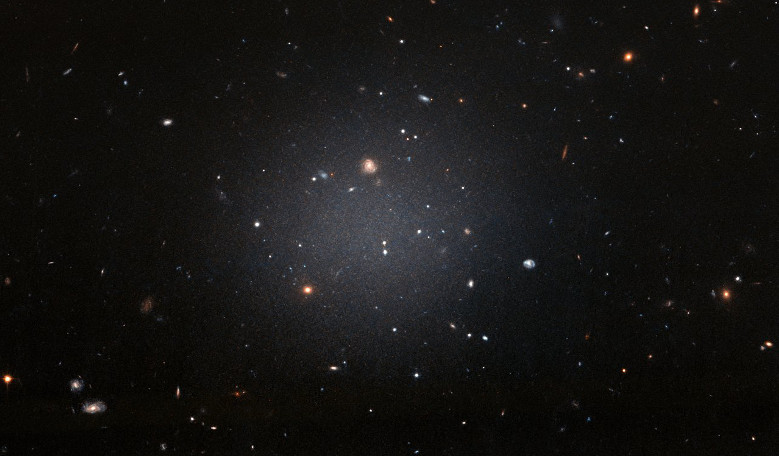In what appears to be a first, an international team of astronomers have found something amiss with a galaxy 65 million years away – a distinct lack of dark matter.
In a theory that took root in the 1950s by astronomers examining the motions of stars in spiral galaxies, dark matter is currently believed to be an essential component of the Universe – making up a whopping ~80 percent of its mass – and the invisible glue that holds galaxies and galaxy clusters together.
Although it has never been directly observed, scientists are confident that this elusive material exists because of the gravitational effects it appears to have on astronomical objects.
However, this new study by astronomers using the NASA/ESA Hubble Space Telescope and several other observatories of a galaxy known as NGC 1052-DF2 that appears to have very little, if no dark matter al all, now challenges this currently-accepted theory.
"I spent an hour just staring at this image," lead researcher Pieter van Dokkum of Yale University says as he recalls first seeing the Hubble image of NGC 1052-DF2. "This thing is astonishing: a gigantic blob so sparse that you see the galaxies behind it. It is literally a see-through galaxy."
Based on its its size and brightness, NGC 1052-DF2 is classified as an ultra diffuse galaxy that is larger than the Milky Way, but contains about 250 times fewer stars. By looking at the dynamical properties of ten globular clusters – essentially, a very large ball of stars – orbiting the galaxy, it allowed the team to work out an independent value of the galaxies mass.
And the results were somewhat surprising; NGC 1052-DF2 contains at least 400 times less dark matter than astronomers predict for a galaxy of its mass, and possibly none at all.
"This invisible, mysterious substance is by far the most dominant aspect of any galaxy. Finding a galaxy without any is completely unexpected; it challenges standard ideas of how galaxies work,“ van Dokkum said.
"There is no theory that predicts these types of galaxies — how you actually go about forming one of these things is completely unknown,” added co-author Allison Merritt from Yale University and the Max Planck Institute for Astronomy, Germany.
Is this the end for dark matter? Well, just because NGC 1052-DF2 doesn’t have any, it doesn’t mean that it doesn’t exist at all, rather that dark matter is somehow separable from galaxies and this would happen if dark matter is bound to ordinary matter through gravity alone and nothing else.
And what about NGC 1052-DF2? Is this some type of special galaxy that is the first of its kind to be identified or did a catastrophic event such as the birth of numerous massive stars, push out all of the gas and dark matter around them?
The researchers involved are already working on some ideas about how to explain the missing dark matter and indeed how the galaxy might have formed and a starting point is to hunt for more dark-matter deficient galaxies. Luckily, their studies might be given an early boost as Hubble images of 23 other ultra-diffuse galaxies seem to suggest that three of them are similar to NGC 1052-DF2. So the enigma of NGC 1052-DF2, may not be an enigma for long.











